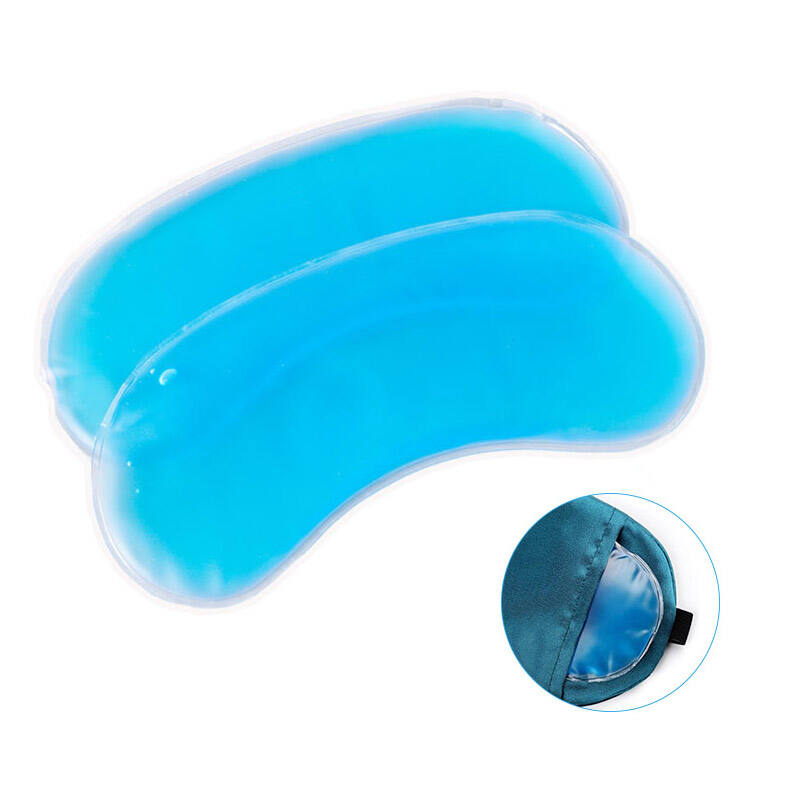Understanding Temperature Therapy for Pain Management
Temperature therapy has been a trusted method of pain relief for centuries, with hot and cold packs standing at the forefront of this therapeutic approach. These versatile tools have become essential items in homes, athletic facilities, and medical settings worldwide. A hot and cold pack combines the benefits of both heat and cold therapy in one convenient solution, offering targeted relief for various conditions and injuries.
Modern hot and cold packs are designed with advanced materials that can maintain specific temperatures for extended periods, making them highly effective for managing pain, reducing inflammation, and promoting healing. Whether you're dealing with a sports injury, chronic pain, or post-workout soreness, understanding how these therapeutic tools work can help you maximize their benefits for optimal recovery.
The Science Behind Temperature Therapy
Heat Therapy Mechanisms
Heat therapy works by increasing blood flow to specific areas of the body. When you apply a hot and cold pack in its heated state, it dilates blood vessels, improving circulation and oxygen delivery to tissues. This enhanced blood flow helps remove metabolic waste products and delivers essential nutrients to accelerate healing. The warmth also helps relax tense muscles, reduce muscle spasms, and increase tissue elasticity.
Additionally, heat therapy stimulates heat receptors in the skin, which can help block the transmission of pain signals to the brain. This natural pain-relieving mechanism makes hot therapy particularly effective for chronic conditions and deep tissue discomfort.
Cold Therapy Benefits
Cold therapy operates through a different mechanism. When a hot and cold pack is used in its cold state, it causes blood vessels to constrict, reducing blood flow to the treated area. This vasoconstriction helps minimize swelling and inflammation, particularly beneficial in acute injuries. The cold temperature also slows down nerve impulses, reducing pain signals and providing a numbing effect.
The cooling effect also helps decrease tissue metabolism, which can limit the extent of tissue damage in acute injuries by reducing the body's inflammatory response. This makes cold therapy especially valuable in the immediate aftermath of injuries or during acute pain episodes.
Applications and Usage Guidelines
Optimal Heat Application
For maximum effectiveness, hot therapy should be applied for 15-20 minutes at a time. The hot and cold pack should feel warm but not uncomfortably hot against the skin. Heat therapy is particularly beneficial for chronic conditions such as arthritis, old injuries, and muscle tension. It's best used before physical activity to increase flexibility and reduce muscle tension.
Heat therapy through a hot and cold pack can be especially effective in the morning for stiff joints or in the evening to relax muscles after a long day. Always ensure proper insulation between the pack and your skin to prevent burns, and avoid heat application on fresh injuries or areas with active inflammation.

Effective Cold Treatment
Cold therapy is most effective when applied immediately after an injury or during acute inflammation. The hot and cold pack should be used in its cold state for 10-15 minutes at a time, with at least an hour between applications. This timing allows the body's natural healing responses to work while preventing tissue damage from prolonged cold exposure.
When applying cold therapy, wrap the pack in a thin towel to protect your skin from direct contact with the frozen surface. Cold treatment is particularly effective for recent injuries, sprains, and post-exercise inflammation. It's important to monitor the treated area for any signs of excessive cooling or discomfort.
Specialized Applications
Athletic Recovery
Athletes frequently use hot and cold pack therapy as part of their training and recovery regimen. Before workouts, heat application can help prepare muscles for activity by increasing flexibility and reducing the risk of injury. Post-exercise, cold therapy helps minimize inflammation and speeds up recovery by reducing muscle soreness and tissue damage.
Many professional sports teams incorporate alternating hot and cold therapy into their recovery protocols, using sophisticated temperature-controlled systems. This approach helps maintain peak performance and reduces recovery time between training sessions or competitions.
Medical Rehabilitation
In medical settings, hot and cold pack therapy plays a crucial role in rehabilitation programs. Physical therapists often use temperature therapy to complement other treatments, enhancing their effectiveness. The versatility of these packs allows for targeted treatment of specific body areas, making them valuable tools in post-surgery recovery and chronic pain management.
Medical professionals may recommend specific temperature therapy protocols based on individual conditions and recovery goals. This might include alternating between hot and cold treatments or focusing on one temperature modality depending on the healing stage and symptoms.
Choosing the Right Hot and Cold Pack
Material Considerations
Modern hot and cold packs come in various materials and designs, each offering specific advantages. Gel-based packs provide excellent temperature retention and conform well to body contours. Some feature specialized polymers that maintain temperature longer than traditional materials. The choice of material can significantly impact the pack's effectiveness and durability.
When selecting a hot and cold pack, consider factors such as flexibility when frozen, heat retention capabilities, and ease of temperature activation. High-quality packs often feature reinforced seams and puncture-resistant materials to ensure longevity and prevent leakage.
Size and Design Features
The size and shape of a hot and cold pack should match its intended use. Larger packs work well for back pain or larger muscle groups, while smaller, more flexible options are better suited for joints and smaller areas. Some packs come with straps or holders for hands-free application, which can be particularly useful during extended treatment sessions.
Consider how the pack will be used most frequently when making a selection. Features like microwave-safety for heating and proper insulation for cold therapy are essential for convenient and safe use. The best designs balance functionality with practical considerations like storage and portability.
Frequently Asked Questions
Can I use a hot and cold pack directly on my skin?
Never apply a hot and cold pack directly to your skin. Always use a thin towel or the provided cover as a barrier to prevent skin damage. This is especially important when using the pack in its cold state, as direct contact with frozen surfaces can cause ice burns.
How long should I wait between hot and cold treatments?
When alternating between hot and cold therapy, wait at least 1 hour between treatments to allow your tissues to return to normal temperature. This helps prevent tissue stress and ensures maximum therapeutic benefit from each application.
How do I know whether to use heat or cold therapy?
Generally, use cold therapy for acute injuries, inflammation, and swelling within the first 48-72 hours. Use heat therapy for chronic pain, muscle tension, and stiffness. If unsure, consult a healthcare provider for specific guidance based on your condition.

